We’ve all been there—reaching for a granola bar instead of a candy bar, swapping soda for fruit juice, or tossing a “light” salad dressing into our shopping cart because the label promised fewer calories and more wellness.
In a world where every package screams “all-natural,” “low-fat,” “gluten-free,” or “packed with antioxidants,” it’s easy to feel like you’re making all the right choices. But here’s the hard truth: many of these so-called “health foods” are just cleverly disguised junk food wearing a halo.
Food marketing is a sneaky business. Brands slap on buzzwords like “organic,” “wholesome,” or “plant-based” to win your trust—while quietly loading their products with sugar, sodium, preservatives, and filler ingredients that do your body no favors.
Just because something is found in the health food aisle doesn’t mean it belongs on your plate.
And while a handful of these foods can fit into a balanced diet in moderation, others are downright deceptive, offering more harm than health. The worst part? You might be sabotaging your goals without even realizing it.
That’s why we’re pulling back the curtain and shining a light on 30 foods that might seem innocent—or even virtuous—but deserve a serious side-eye.
Whether you’re trying to lose weight, boost energy, or simply eat cleaner, knowing what not to eat is just as important as knowing what to pile on your plate.
Before you take another bite of that sugar-laced smoothie bowl or pop open a bottle of “vitamin water,” read this list. Your body—and your grocery budget—will thank you.
1. Granola
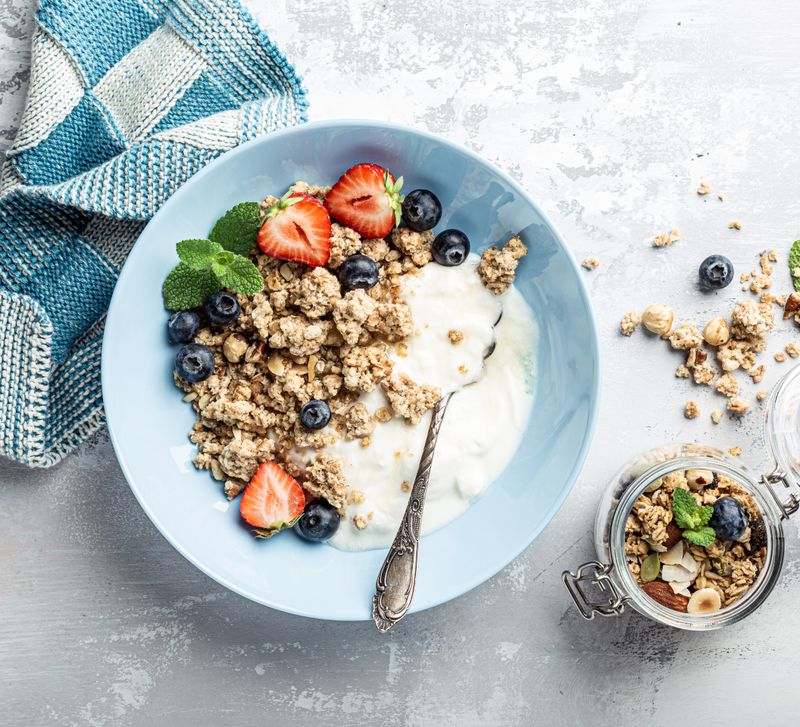
Granola may have the reputation of being a health food, but its secret often lies in the sugary syrup used to bind it all together. Sure, it’s loaded with oats and nuts, but those hidden sugars and oils can make it as calorie-dense as a dessert. Have you ever wondered why it tastes so good?
The answer may lie in the sugars and fats that are often used to enhance its flavor. Many commercial granolas come with a hefty dose of added sweeteners, which, when consumed in excess, can lead to weight gain and other health issues.
So, next time you reach for this crunchy breakfast staple, check the label closely. A sprinkle of homemade granola might be a better choice, allowing you to control the ingredients.
2. Flavored Yogurt
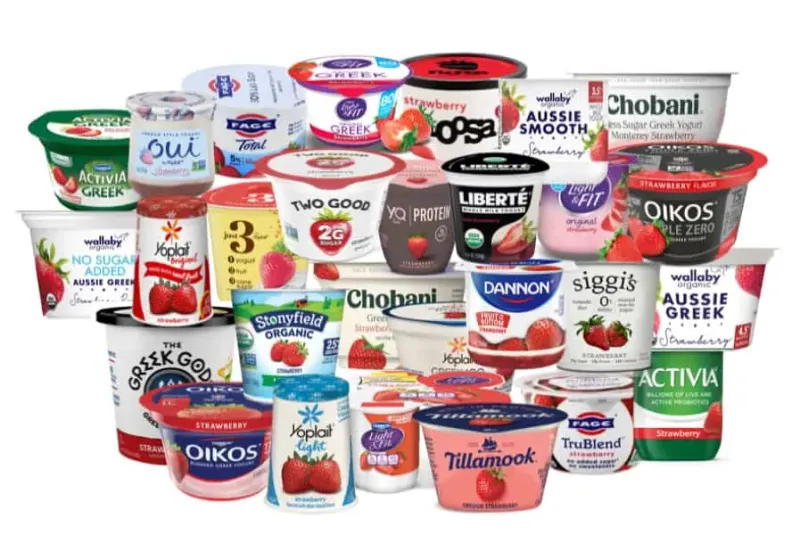
Flavored yogurt might seem like a convenient way to get some probiotics into your diet, but take a closer look at the label, and you might be surprised. These seemingly innocent cups are usually packed with sugars and artificial flavors, transforming what could be a healthy snack into something akin to dessert.
It’s not just the sugar content that’s a problem; the artificial flavors and additives can also detract from any potential health benefits. Many people believe they’re making a healthy choice, but the reality can be quite different.
To truly enjoy yogurt as a health food, consider opting for plain varieties and adding your own fresh fruit. This way, you get all the benefits without the added sugars and flavors.
3. Veggie Chips
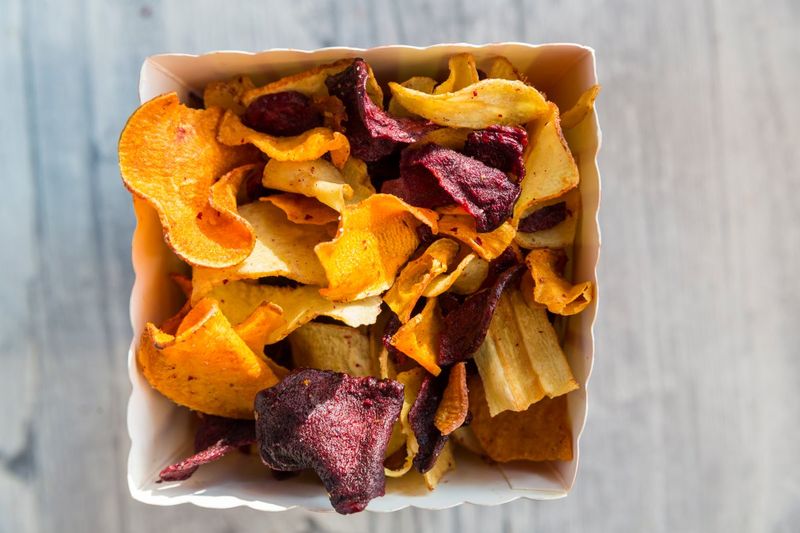
Veggie chips are often marketed as a healthier alternative to regular potato chips, but don’t be fooled. While they start as vegetables, by the time they reach your table, they’ve been deep-fried and heavily salted.
The vibrant colors and clever packaging might suggest a nutritious snack, but these chips often contain as much fat and sodium as their potato counterparts. If you’re reaching for them in the belief that they’re a guilt-free snack, you might want to think again.
Instead, consider making your own baked veggie chips at home. This way, you retain control over the ingredients and can ensure they’re as healthy as they look.
4. Protein Bars
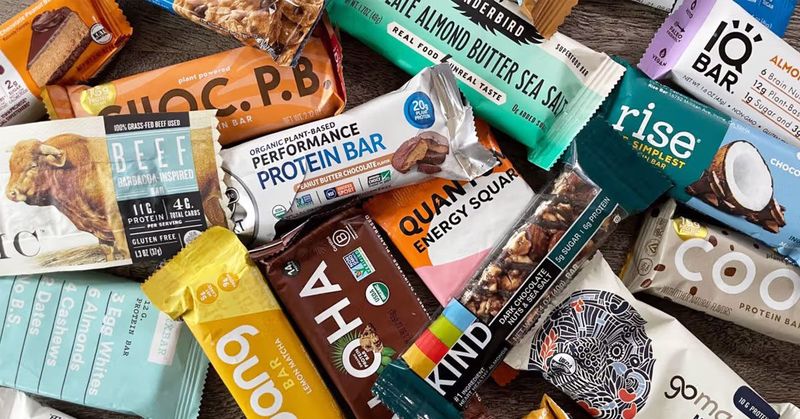
Protein bars are often hailed as a quick and easy way to fuel up, especially after a workout, but they may not be as healthy as you think. Many are filled with sugar alcohols, artificial flavors, and questionable ingredients.
Some bars have more in common with a candy bar than a health snack. It’s easy to be drawn in by the promises of high protein content, but a quick glance at the nutrition facts can reveal a different story.
If you’re looking for a protein boost, consider real foods like nuts, seeds, or even a boiled egg. These options provide real nutrition without the added chemicals and sugars often found in protein bars.
5. Smoothie Bowls
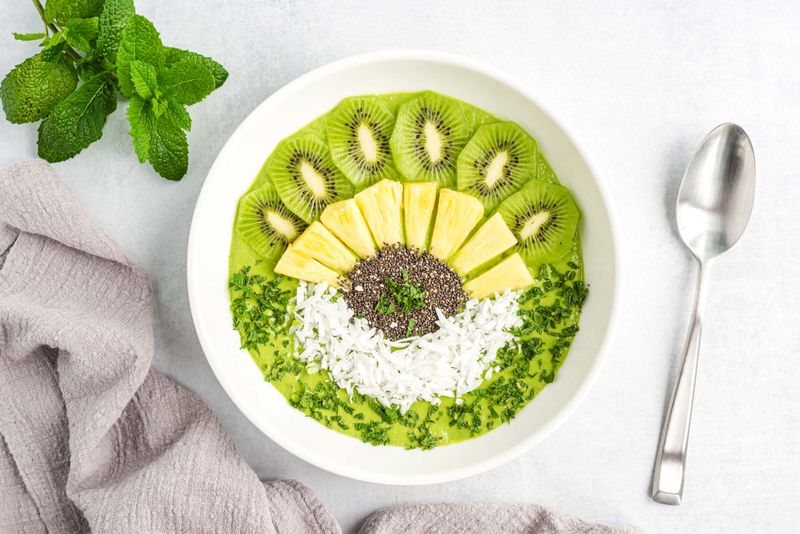
Smoothie bowls look like a picture of health, brimming with vibrant fruits and seeds, but looks can be deceiving. Depending on the toppings and base, they can contain more sugar than a milkshake.
The allure of colorful, Instagram-worthy presentations might make them seem like the epitome of healthy eating, but those added sugars and syrups can quickly turn them into calorie bombs. If you’re not careful, you might end up consuming more sugar than intended.
For a genuinely healthy smoothie bowl, try using a base of unsweetened yogurt or milk and top with fresh berries and nuts. This approach keeps the sugar content in check while still delivering a satisfying treat.
6. Sports Drinks
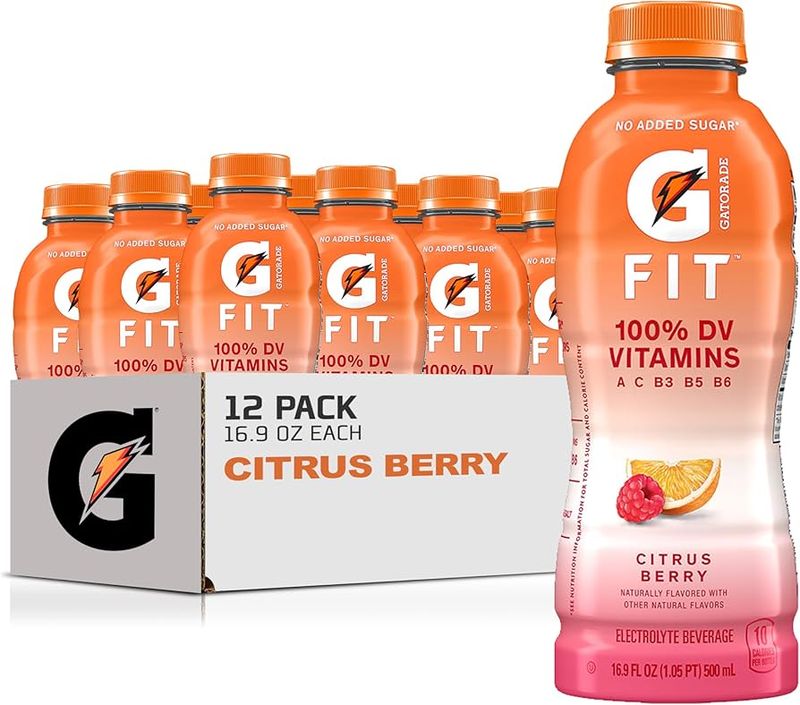
Sports drinks are designed for athletes who need to replenish electrolytes lost during intense exercise, not for casual sippers. Yet, they’re often consumed by those who don’t need the extra sugar and artificial dyes.
These drinks can be loaded with sugars that might contribute to weight gain and dental problems if consumed regularly. The vibrant colors and energetic branding make them appealing, but for most people, water is a better choice.
If you aren’t running marathons, think twice before reaching for a sports drink. Opt for water with a splash of lemon instead, and keep those sugars and dyes out of your diet.
7. Gluten-Free Packaged Snacks
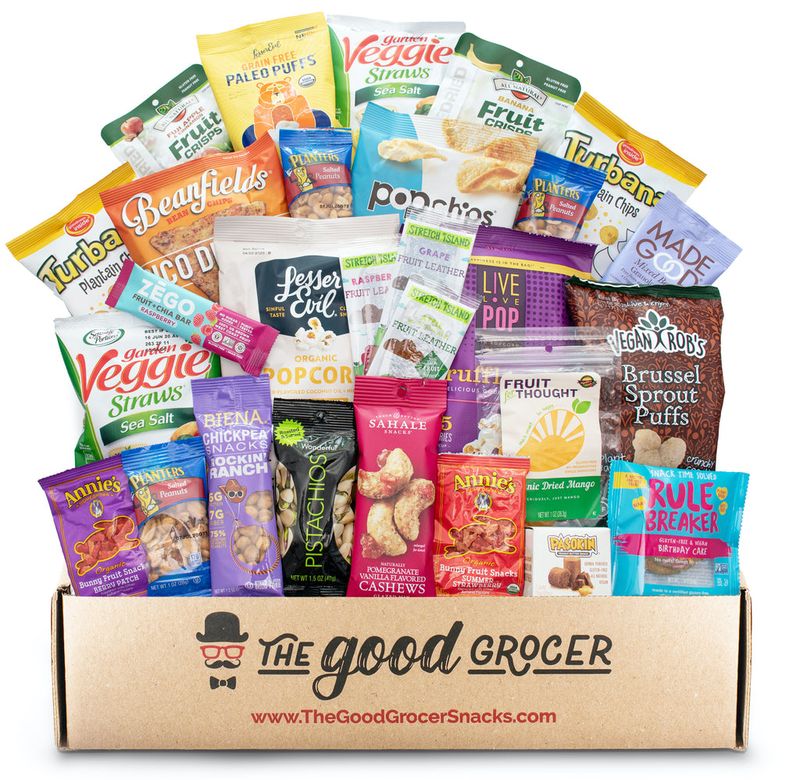
Gluten-free doesn’t always mean healthy. While these snacks are a blessing for those with celiac disease or gluten sensitivity, they often lack fiber and are high in starch.
Many gluten-free products compensate for the lack of gluten with added sugars and fats, which can make them no better than their gluten-containing counterparts. It’s easy to be misled by the gluten-free label into thinking you’re making a healthier choice.
For a truly nutritious snack, look for whole foods like fruits, vegetables, or homemade options where you can control the ingredients. This way, you enjoy the benefits of gluten-free without the downsides.
8. Agave Nectar
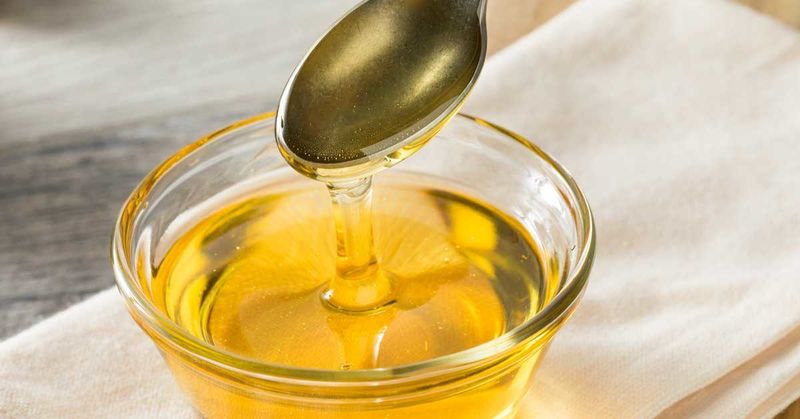
Agave nectar is often marketed as a natural sweetener, but its high fructose content makes it hard on your liver. While it’s lower on the glycemic index than regular sugar, it’s not the health food it claims to be.
The marketing around agave often highlights its natural origins, yet the high fructose levels can contribute to insulin resistance and fatty liver disease. If you’re trying to cut down on sugar, this syrup might not be the answer.
Consider honey or maple syrup as alternatives, but always use in moderation. Being mindful of sweeteners can help you maintain a healthier diet without overloading on fructose.
9. Store-Bought Green Juices
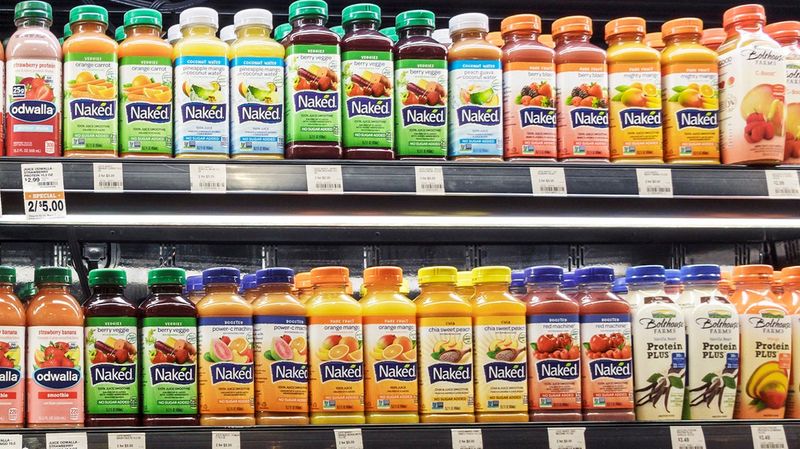
Store-bought green juices might look like a quick health fix, but they can be sugar bombs in disguise. Often, these juices contain more fruit than vegetables, leading to high sugar content.
The enticing green color and promises of detoxification might lure you in, but if the juice is packed with fruit, you’re likely getting more sugar than intended. The health benefits can be overshadowed by what ends up being a sugary drink.
To enjoy the benefits of green juice, consider making your own at home with a focus on vegetables. This way, you control the sugar content and ensure you’re getting a true health boost.
10. Microwave Diet Meals
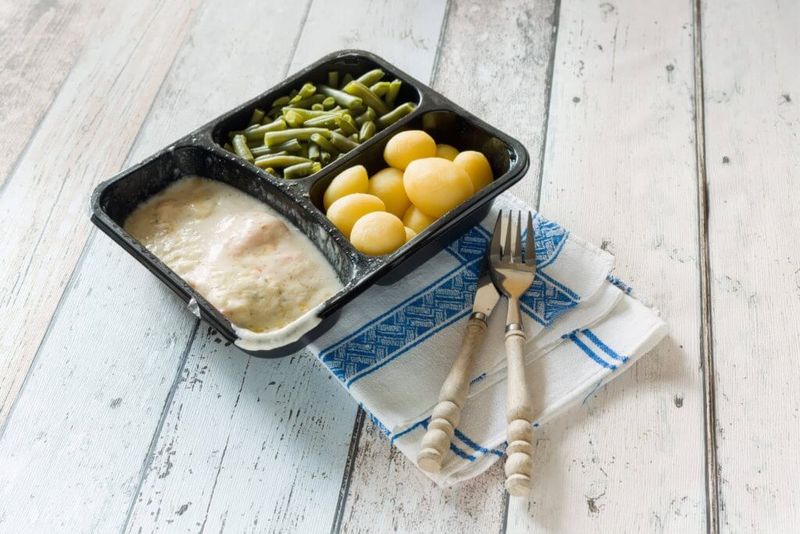
Microwave diet meals promise convenience and calorie control, but they often come with a side of high sodium and preservatives. What you gain in convenience, you might lose in nutritional value.
These meals are often marketed as a quick way to lose weight, yet the hidden salts and additives can lead to bloating and other health issues. If you’re relying on them regularly, you might not be getting the nutrients you need.
For a healthier option, try preparing meals in advance using fresh ingredients. This way, you control the salt and additive content while still enjoying the convenience of a quick meal.
11. Whole Wheat Bread
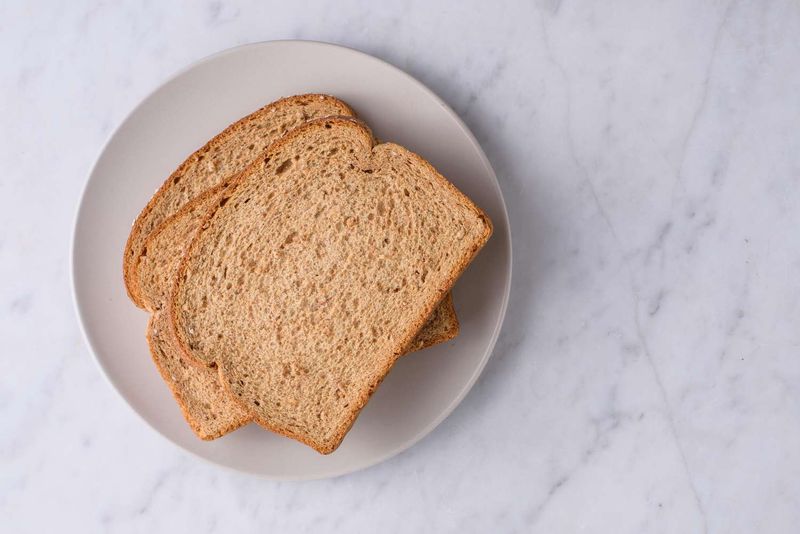
Whole wheat bread is often seen as a healthier alternative to white bread, but not all loaves are created equal. Many brands include enriched flour and added sugars, so reading the label is crucial.
While the term “whole wheat” might suggest a more nutritious option, some breads contain as much sugar as their white counterparts. It’s easy to be deceived by claims of whole grain goodness.
To enjoy the benefits of whole wheat bread, look for options with whole grain as the first ingredient and minimal added sugars. This ensures you’re making a health-conscious choice for your diet.
12. Dried Fruit
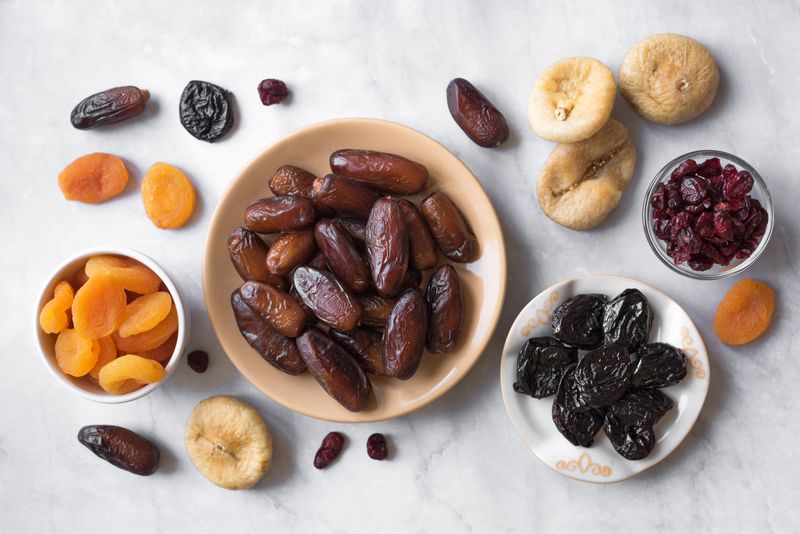
Dried fruit might seem like a healthy snack, but it’s essentially sugar concentrated into chewy little calorie bombs. While the fruit retains its vitamins and fiber, the drying process concentrates its sugar content.
It’s easy to overeat dried fruits, mistaking them for a guilt-free snack. However, those concentrated sugars can add up quickly, leading to unexpected calories and potential weight gain.
To enjoy dried fruits as part of a healthy diet, consider them as a treat rather than a staple. Pairing them with nuts can help balance the sugar rush with healthy fats and proteins.
13. Instant Oatmeal Packets
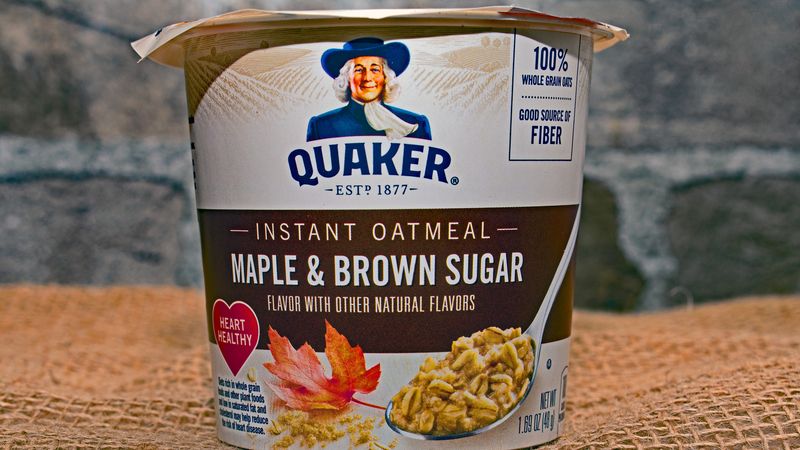
Instant oatmeal packets offer convenience on busy mornings, but they often come loaded with sugar and artificial flavors. While oatmeal itself is a nutritious choice, the instant versions can be a sugar trap.
The enticing flavors and quick preparation might make them appealing, but if you’re not careful, you could be consuming more sugar than you realize. This can detract from the heart-healthy benefits of oats.
For a healthier breakfast, consider making your own oatmeal from scratch. This way, you control the sugar content and can add fresh toppings like fruits and nuts.
14. Acai Bowls
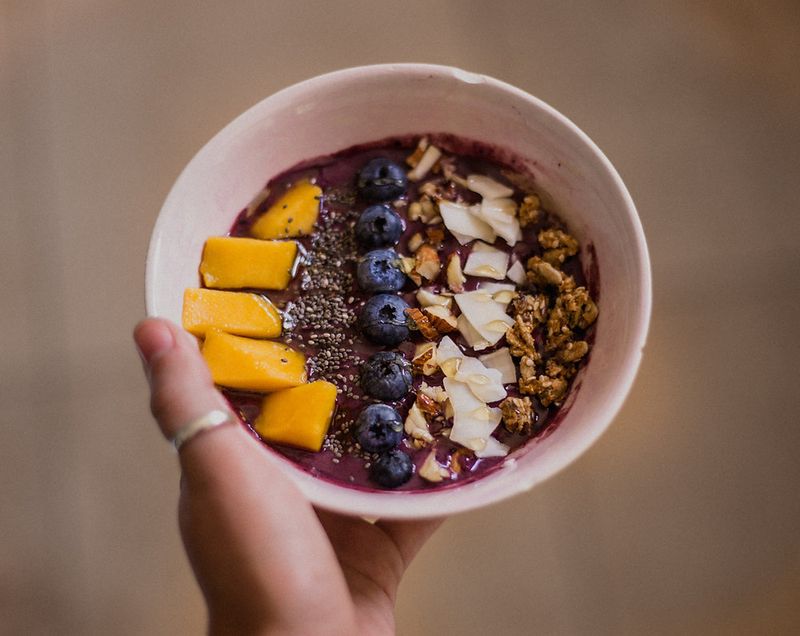
Acai bowls are often touted as nutrient-rich superfoods, but the toppings can turn them into calorie-dense desserts. While the acai berry is indeed packed with antioxidants, the added sugars and high-calorie toppings can offset these benefits.
The beautiful presentation and exotic appeal make them a popular choice, yet it’s easy to consume more sugar and calories than intended. If you’re not cautious, you may not be getting the health benefits you expect.
To enjoy an acai bowl without the extra sugar, opt for fresh fruit and nuts as toppings. This way, you preserve the nutritional value without overindulging.
15. Low-Fat Peanut Butter
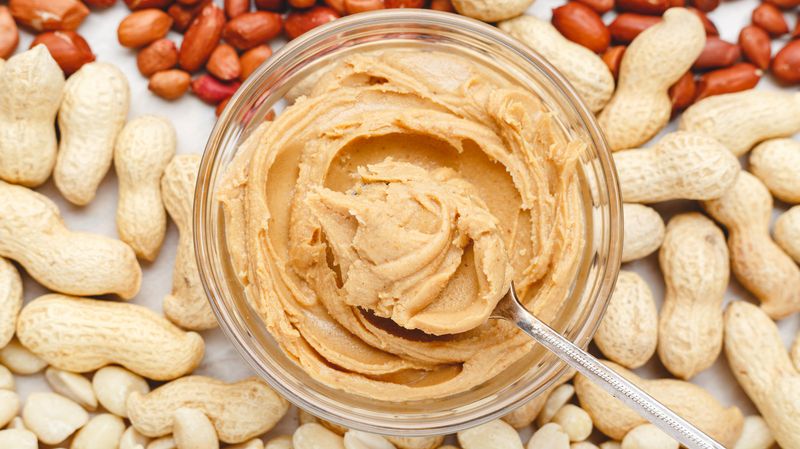
Low-fat peanut butter might sound like a healthier option, but removing the healthy fats often means adding sugar or fillers. While the label promises lower fat content, the trade-off is not always in your favor.
The rich, creamy texture of original peanut butter comes from its natural oils, which are part of what makes it a nutritious choice. Low-fat versions can lose this advantage by adding less desirable ingredients.
If you’re looking for a healthier spread, stick with natural peanut butter, which retains its healthy fats and delicious flavor without unwanted additives.
16. Frozen Yogurt
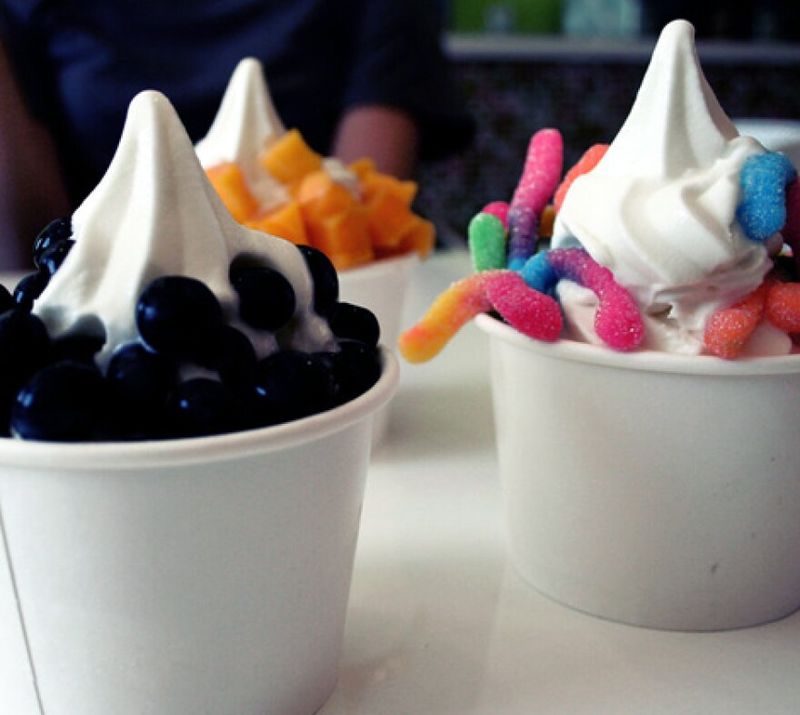
Frozen yogurt boasts lower fat than ice cream, but it can be higher in sugar, especially with toppings. While it’s often marketed as a healthier dessert, the reality is more complex.
The creamy texture and sweet taste might make it seem like a guilt-free treat, but those added sugars can quickly add up, especially if you indulge in toppings like candy or syrups.
For a lighter dessert, consider topping your frozen yogurt with fresh fruit. This choice helps keep the sugar content in check while still satisfying your sweet tooth.
17. Coconut Sugar
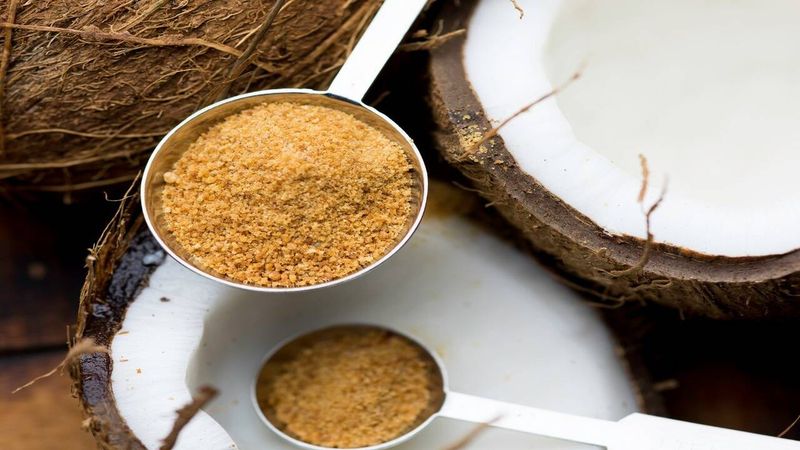
Coconut sugar is often marketed as a healthy alternative, but it’s still sugar, no matter how trendy or “unrefined.” While it contains trace nutrients, it’s not significantly healthier than regular sugar.
The allure of natural sweeteners can be tempting, but coconut sugar can still spike blood sugar levels, leading to health issues if consumed in excess. It’s essential to remember that sugar is sugar, regardless of its source.
If you’re looking to reduce sugar in your diet, consider using it sparingly. A balanced approach to sweeteners can help you maintain a healthier lifestyle.
18. Rice Cakes
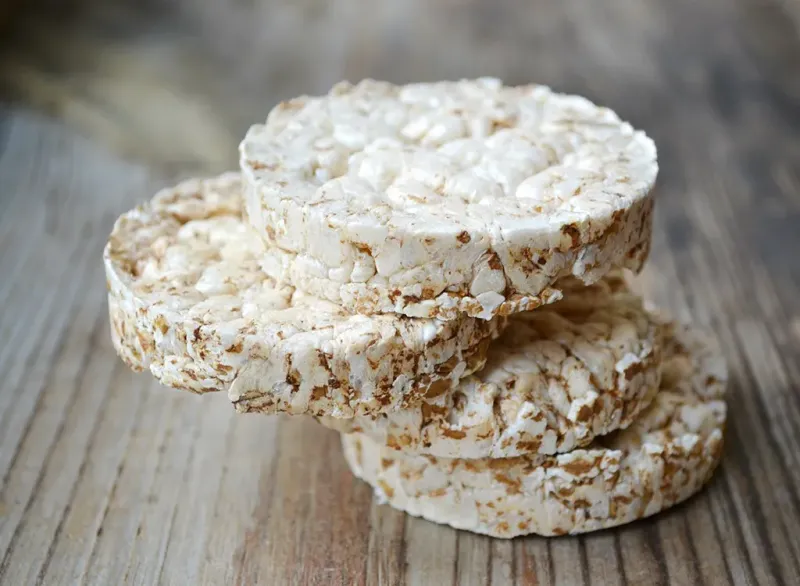
Rice cakes are often seen as a low-calorie snack option, but they’re low in nutrients and can spike your blood sugar quickly. While they make for a crunchy snack, they lack the essential vitamins and minerals needed for a balanced diet.
The light, airy texture might make them seem like a harmless choice, but their high glycemic index means they can cause rapid blood sugar spikes. If you’re looking for a satisfying snack, rice cakes might not be the answer.
Consider pairing them with a source of protein or healthy fat, like avocado or nut butter, to balance the glycemic impact and add nutritional value.
19. Fruit-Flavored Water
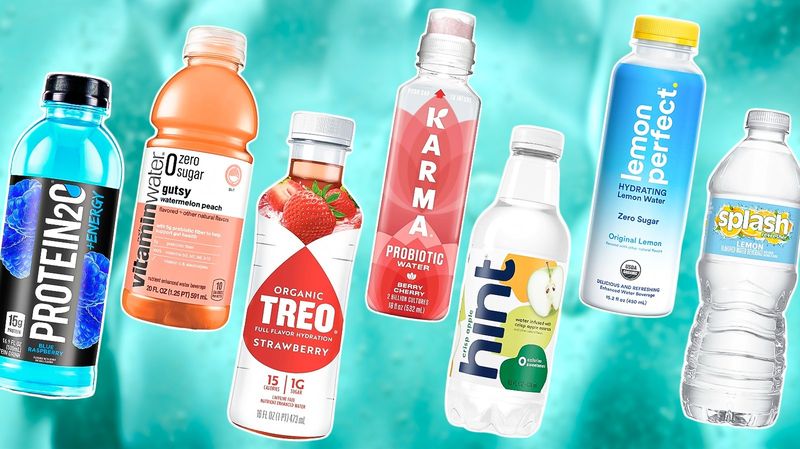
Fruit-flavored water might seem like a healthy way to stay hydrated, but it often contains artificial sweeteners and hidden sugars. While the idea of water infused with fruit sounds appealing, the reality can be quite different.
These beverages might taste refreshing, but the added sugars and chemicals can detract from the health benefits of plain water. It’s easy to overlook these ingredients when seduced by colorful packaging and fruit imagery.
To stay hydrated healthily, consider infusing plain water with fresh fruit slices. This way, you enjoy the natural flavors without unwanted additives.
20. Bottled Salad Dressings

Bottled salad dressings, even the “light” versions, are often high in sugar and additives. While they’re convenient, they can turn a healthy salad into a calorie-laden meal.
The creamy textures and bold flavors might be appealing, but if you’re not careful, you might be adding more sugar and preservatives than you realize. Making your own dressing can be a healthier and tastier option.
For a simple alternative, try mixing olive oil with vinegar or lemon juice. This choice keeps your salad fresh and flavorful without unwanted sugar and chemicals.
21. Breakfast Cereals
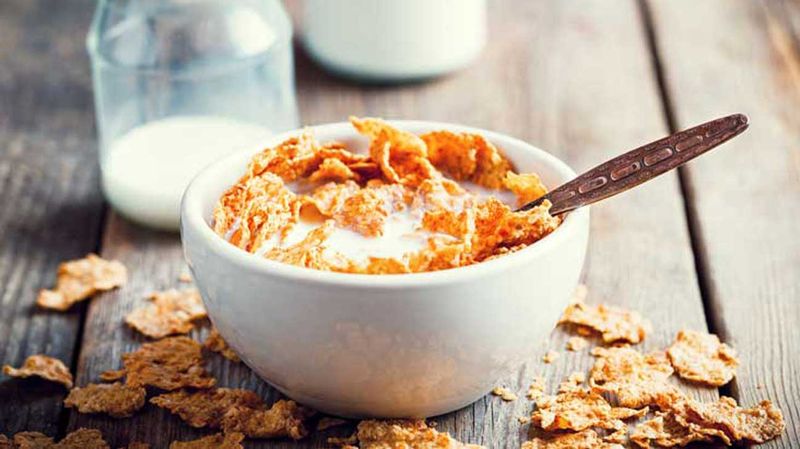
Breakfast cereals, even the “whole grain” ones, can be sugar traps. While they promise a nutritious start to your day, many are laden with sugars and lack the fiber needed for a balanced meal.
The colorful boxes and fun shapes might make them a favorite for kids, but the hidden sugars can lead to energy crashes and cravings. Choosing cereals without added sugars or making your own mix can be a healthier choice.
For a nutritious breakfast, consider oats or muesli with fresh fruit. This option provides sustained energy and essential nutrients without the sugar overload.
22. Pita Chips
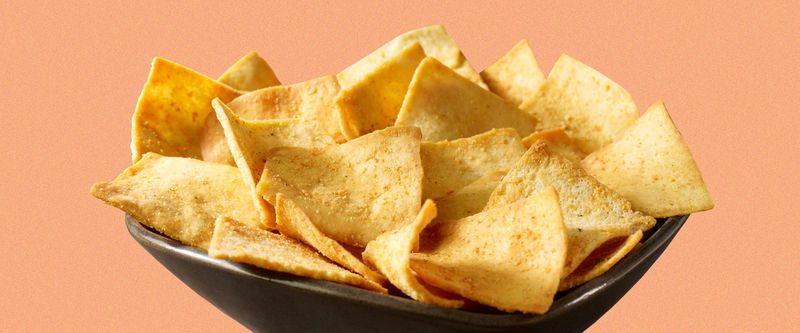
Pita chips are often marketed as a healthy snack, but they are frequently fried and salty. While the name might suggest a better choice than regular chips, the reality can be misleading.
The crisp texture and savory flavor can be tempting, but if you’re not careful, you might consume more fat and sodium than intended. Baking your own pita chips can provide a healthier alternative.
For a lighter snack, try pairing them with hummus or salsa. This combination offers a satisfying crunch with less salt and fat, making it a smart choice for mindful snacking.
23. Soy Milk (Flavored or Sweetened)
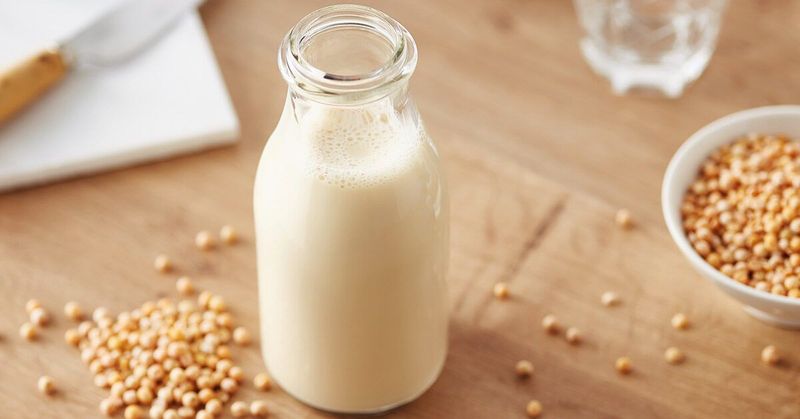
Flavored or sweetened soy milk can be a hidden source of sugar. While soy milk itself can be a nutritious option, the flavored varieties often come with added sugars that can detract from its health benefits.
The smooth, creamy texture and various flavors might make them appealing, but checking the label is essential to avoid unwanted sugar. For those looking to enjoy soy milk without the extra sugar, unsweetened versions are the way to go.
Pairing unsweetened soy milk with natural sweeteners like vanilla or cinnamon can provide a delicious and healthier alternative.
24. Frozen “Healthy” Dinners
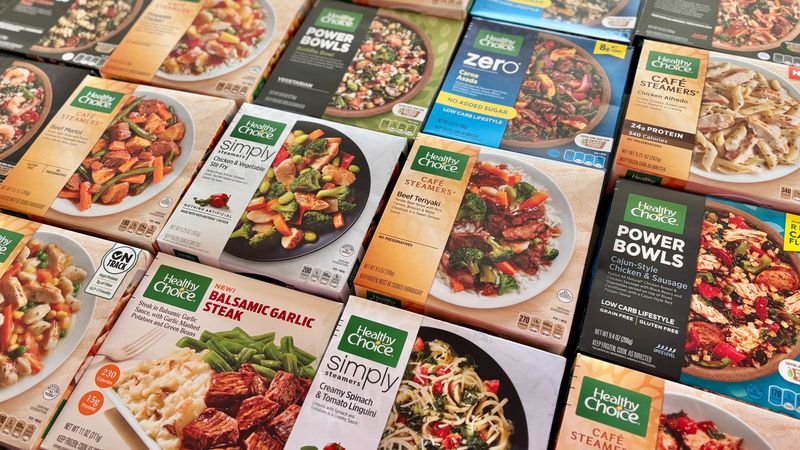
Frozen “healthy” dinners offer convenience, but low-calorie doesn’t mean nutrient-dense. These meals are often filled with additives to improve taste and shelf life, yet they may lack essential nutrients.
The promise of a quick, healthy meal might be appealing, but relying on these dinners regularly can leave you lacking in vital vitamins and minerals. Preparing fresh meals in advance can be a more nutritious option.
For a balanced diet, consider cooking extra portions of home-cooked meals and freezing them. This approach ensures you have a healthy option on hand without the additives.
25. Fruit Snacks
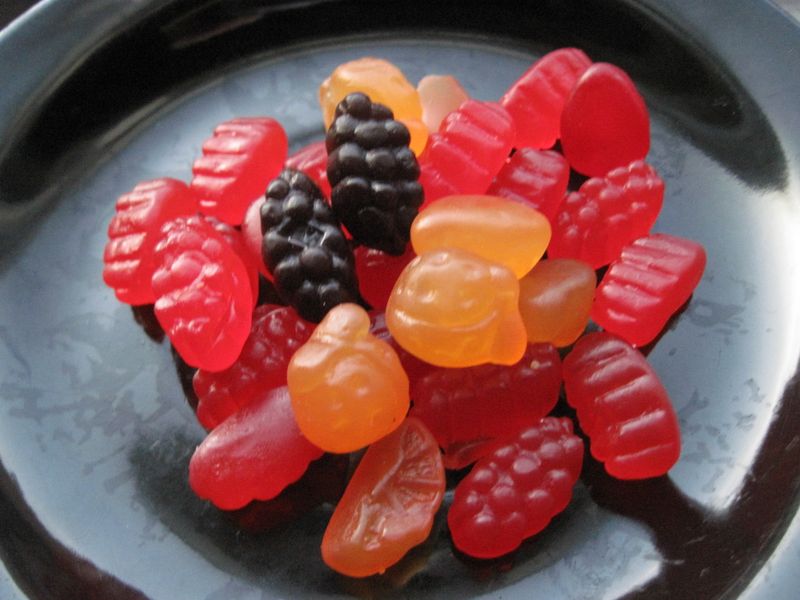
Fruit snacks, often marketed to kids, are basically gummy candy. Despite the fruity names and colorful packaging, these snacks are usually made with sugar, corn syrup, and artificial flavors.
It’s easy to mistake them for a healthy option, especially when the packaging suggests real fruit content. However, they can be a source of unnecessary sugars and calories with little nutritional value.
For a genuinely healthy snack, consider fresh fruit or homemade fruit leather. These choices provide natural sweetness and nutrients without the added sugars and chemicals.
26. Flavored Almond Milk
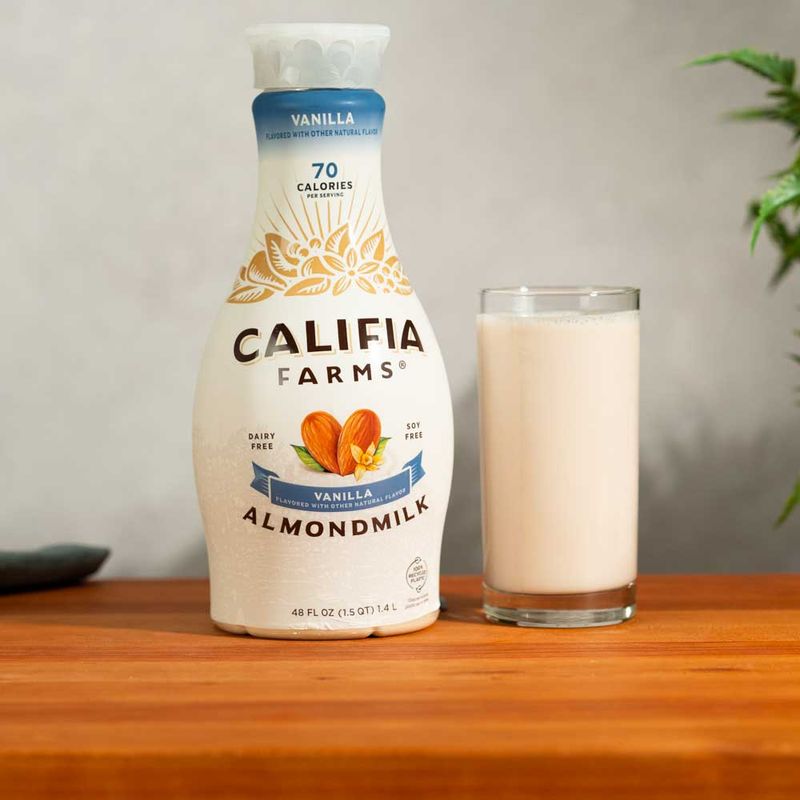
Flavored almond milk can have added sugars and stabilizers that detract from its health benefits. While almond milk is a popular dairy alternative, the flavored varieties often come with ingredients you might not want.
The creamy texture and sweet flavors can be enticing, but checking the label is crucial to avoid unwanted sugars. To enjoy almond milk without the additives, unsweetened versions are the way to go.
For a healthier option, try adding natural flavors like vanilla or cocoa to unsweetened almond milk. This way, you enjoy the taste without extra sugars.
27. Cauliflower Pizza Crust
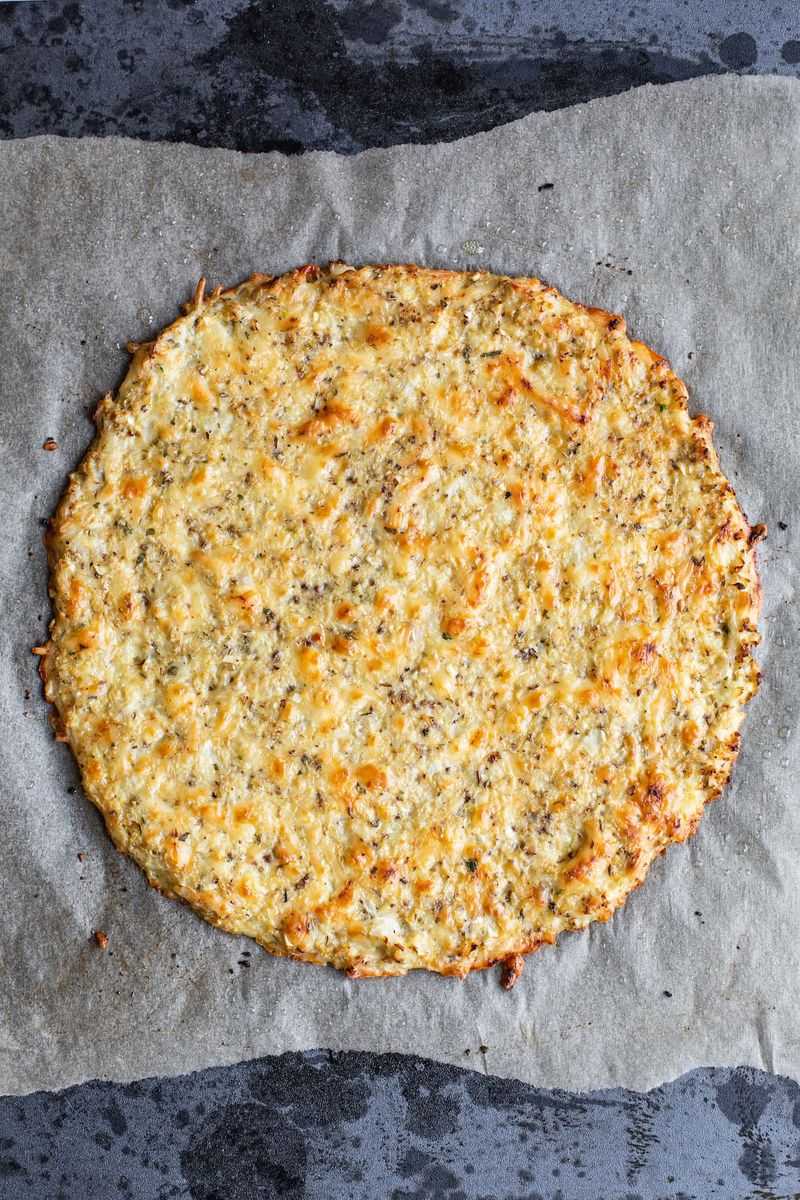
Cauliflower pizza crust might sound like a low-carb alternative, but many versions include cheese and starches. The idea of a veggie-based crust is appealing, yet the reality can be different.
The extra ingredients can lead to a calorie count similar to regular pizza crusts, making it less healthy than it appears. If you’re opting for cauliflower crust to reduce carbs, it’s essential to check the ingredient list.
Making your own crust at home can be a better choice, allowing you to control what goes in and ensuring a truly low-carb meal.
28. Trail Mix
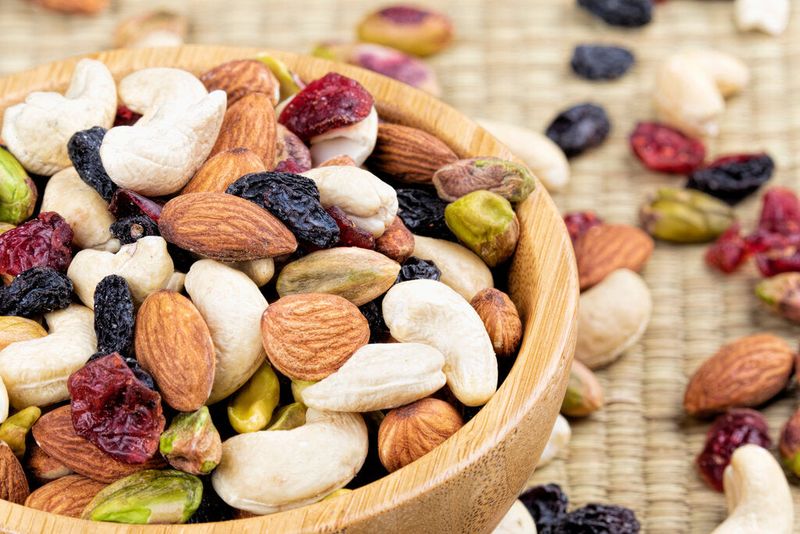
Trail mix combines healthy nuts with not-so-healthy chocolate and dried fruits. The convenience and energy boost make it a popular snack, but those extra ingredients can add up.
The mix of textures and flavors might be appealing, but the added sugars from chocolate and dried fruit can detract from the health benefits. If you’re reaching for trail mix as a healthy snack, moderation is key.
Making your own mix with raw nuts and minimal chocolate can offer a more nutritious option. This way, you get the energy boost without the sugar rush.
29. Pre-Made Smoothies
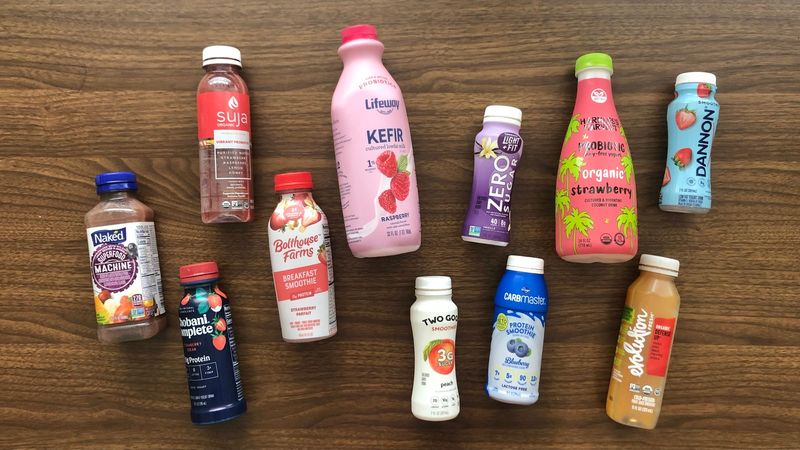
Pre-made smoothies often have more sugar than fiber, especially the chain store versions. While they promise a quick health boost, the reality can be more sugar than expected.
The convenience and vibrant flavors might make them tempting, but the lack of fiber can mean you’re not getting the full benefits of the fruits and vegetables. If you’re looking for a nutritious smoothie, making your own is the best option.
Blending fresh ingredients at home ensures you control the sugar content and retain the fiber needed for a balanced snack.
30. Low-Calorie Ice Creams
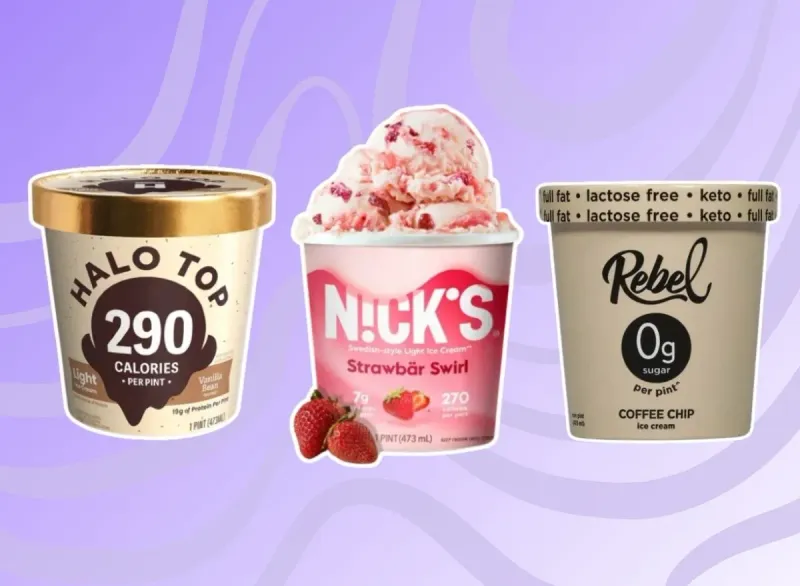
Low-calorie ice creams are filled with artificial sweeteners, gums, and questionable textures. While the promise of enjoying ice cream without the guilt is appealing, the reality can be different.
These ingredients might help reduce calories, but they often compromise on taste and texture. If you’re looking for a true treat, regular ice cream in moderation might be more satisfying.
For a healthier dessert, consider making your own ice cream with natural ingredients. This way, you control the flavors and enjoy a genuine taste without the additives.
Leave a comment